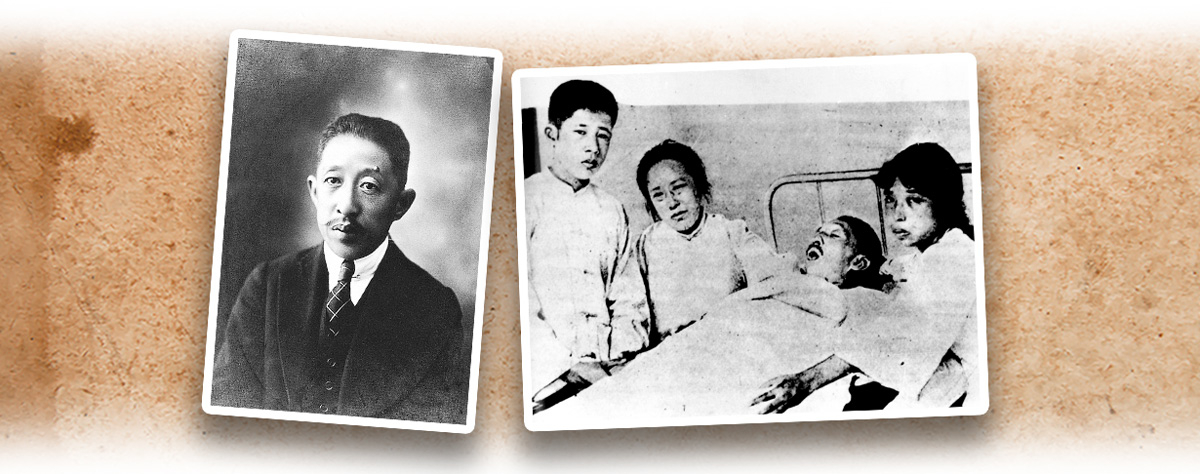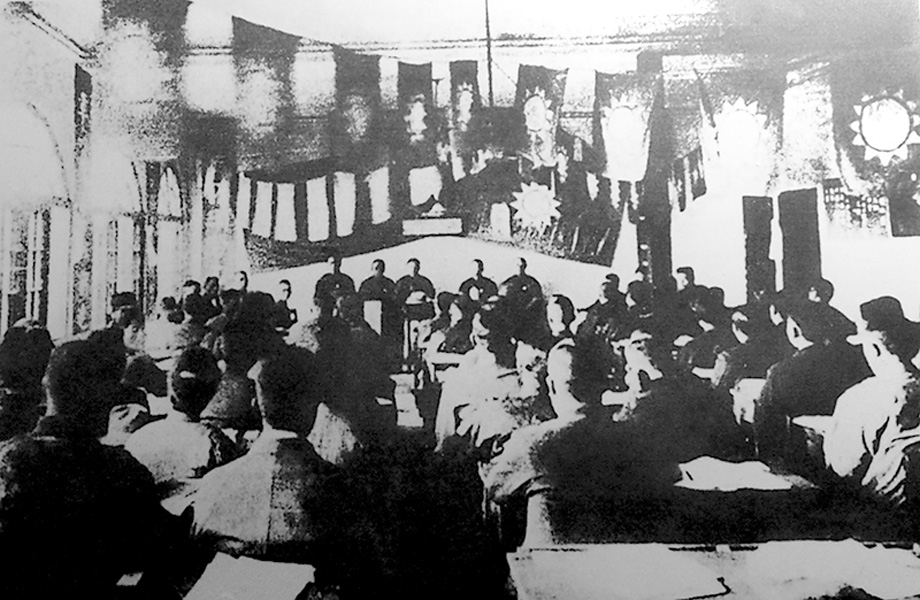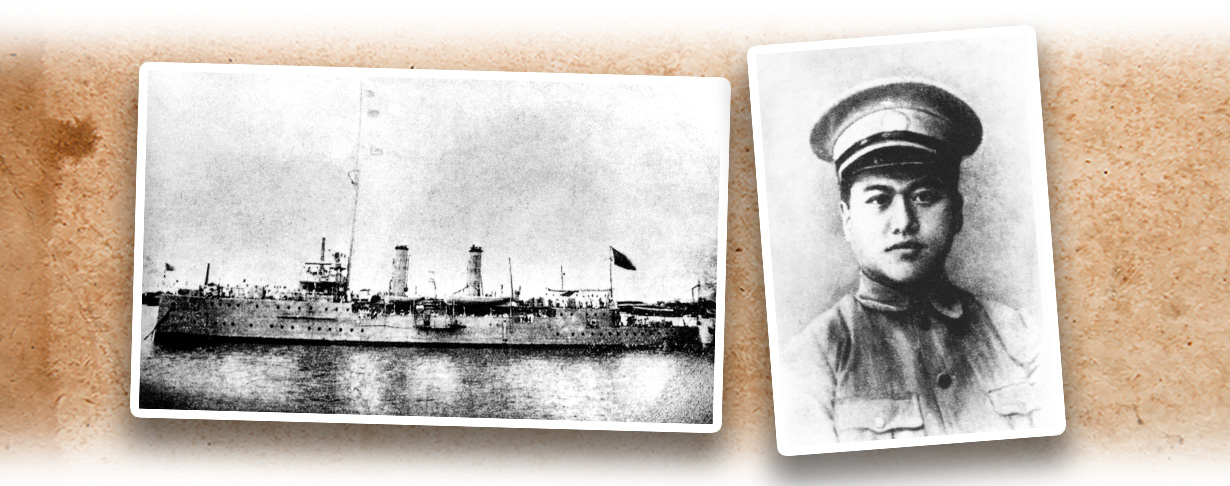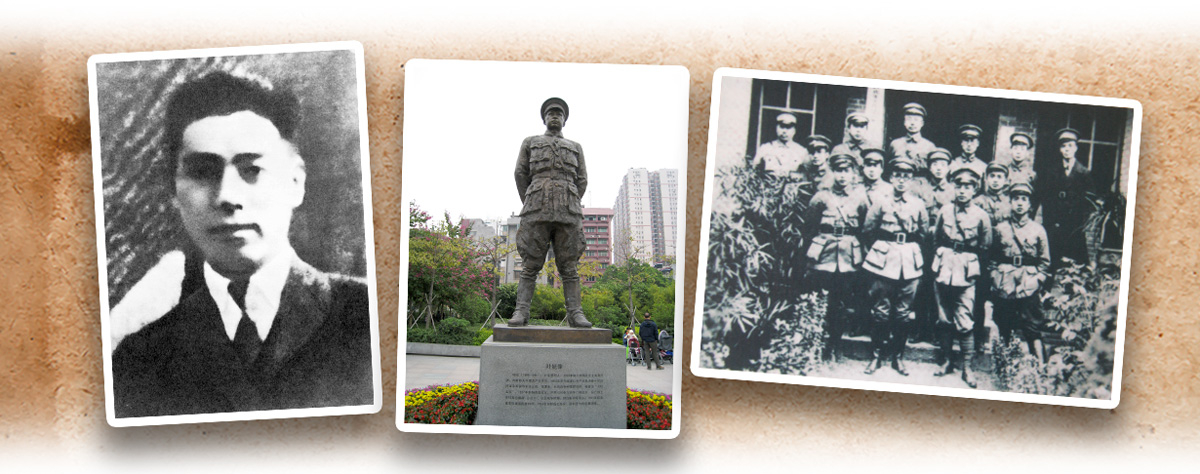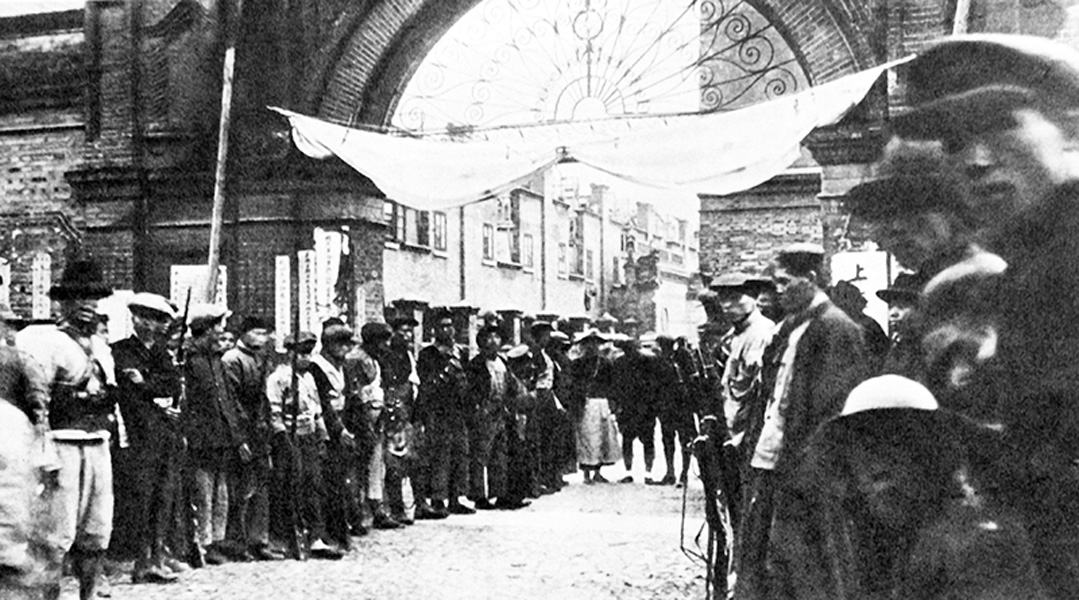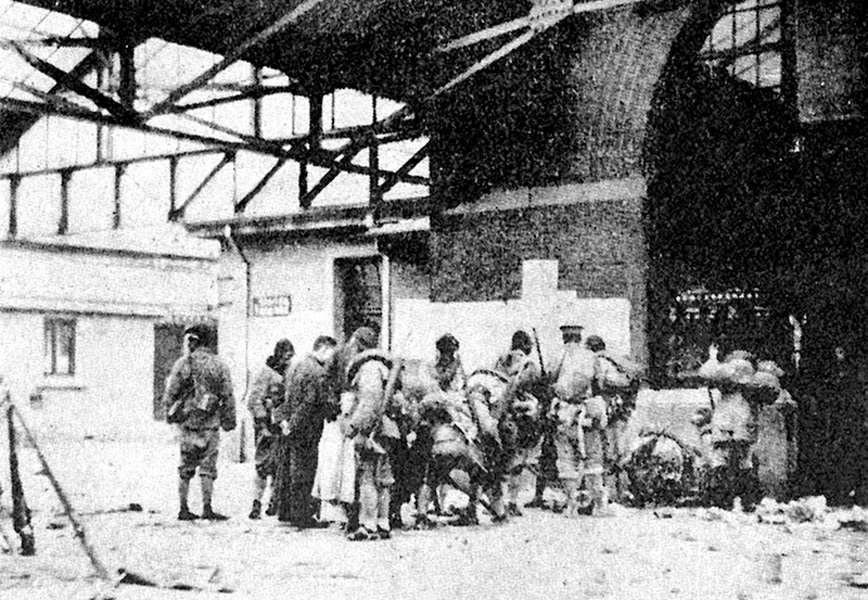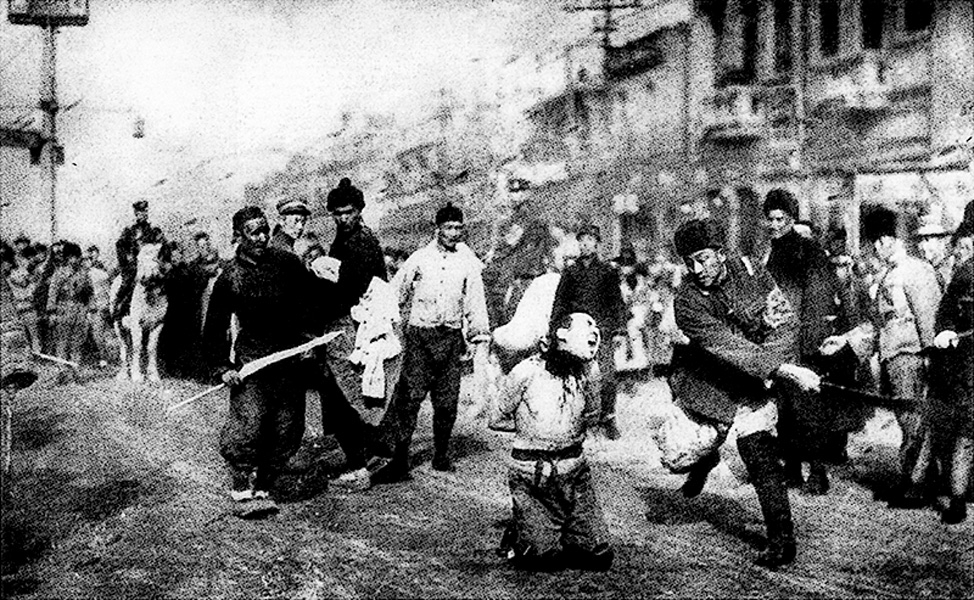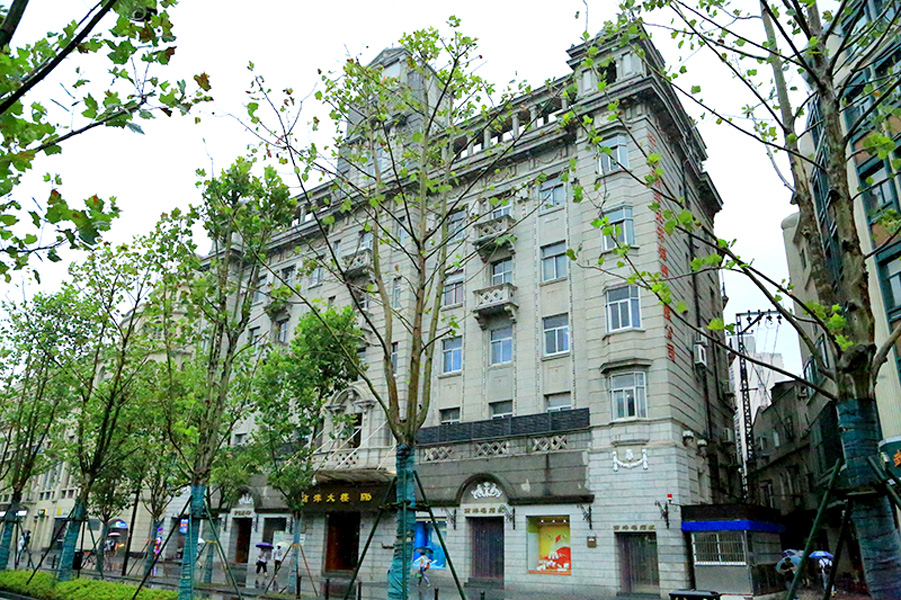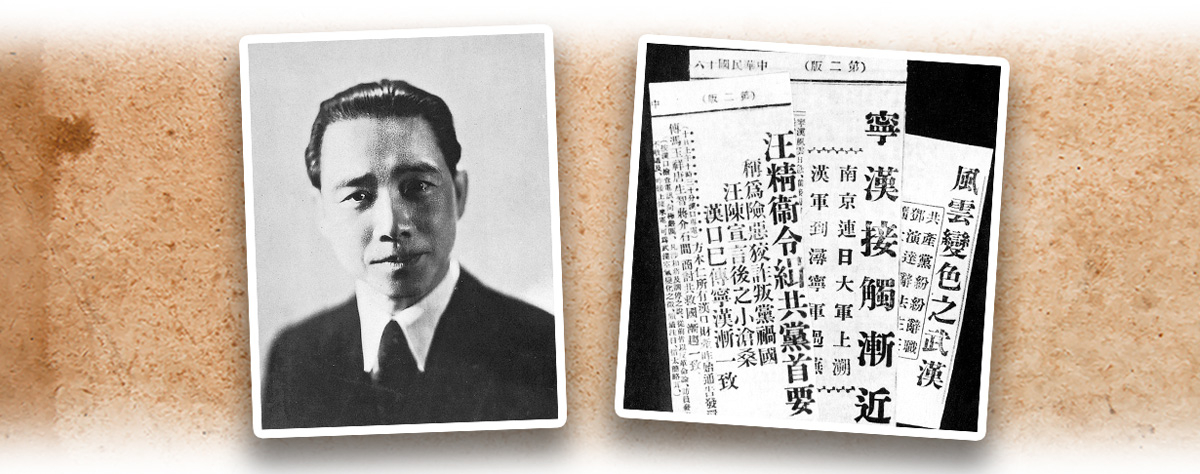Just as the Northern Expedition was going well, the Kuomintang of China (KMT, 中國國民黨) suddenly purged the communist elements in the party. In fact, there had long been opposition in the KMT to the policies of “allying with Soviet Russia, accommodating the Chinese communists” advocated by Sun Yat-sen (孫中山). In November 1925, Zou Lu (鄒魯), Dai Jitao (戴季陶), and others held the 4th Plenary Session of the 1st Central Committee of the Kuomintang of China in front of Sun Yat-sen’s Mausoleum in Temple of Azure Clouds, Western Hills, Beijing (北京), demanding to launch the “Party Purge”, aiming to purge the Chinese Communist Party (CCP, 中國共產黨) members from the KMT. Later, they became known as the Xishan Conference Party (西山會議派).
Chiang Kai-shek (蔣介石) had long held an anti-communist attitude as well. In particular, he felt threatened by the CCP’s launch of workers and peasants movements and its growing strength during the Northern Expedition. From October 1926 to March 1927, Zhou Enlai (周恩來) and others organised Shanghai (上海) workers to launch three armed uprisings to cooperate with the Northern Expedition. However, on 12 April 1927, Chiang launched the “Party Purge” in Shanghai, during which many communists were killed. The campaign soon spread to other places and broke down the first KMT-CCP cooperation.
The Nationalist Government in Wuhan (武漢) headed by Wang Jingwei (汪精衛) initially opposed the purge. Therefore, Chiang established a new nationalist government in Nanjing (南京) on 18 April 1927, which was known as the Nanjing-Wuhan Split (寧漢分裂). However, on 15 July 1927, the Wang-led Nationalist Government also started to eliminate CCP members during the so-called Wuhan-Communist Split (武漢分共). Before long, Wang announced to move the capital of the Wuhan Nationalist Government to Nanjing, which was known as Nanjing-Wuhan Reconciliation (寧漢合流). Since then, the Nationalist Government in Nanjing became the unified regime of the KMT.
|
|
Both the KMT and the CCP originally advocated anti-imperialism and anti-warlordism and were once as close as brothers. Why did they turn against each other during the Northern Expedition? |
|
|
See answer below. |
There were clues in a series of event taking place before the Northern Expedition that led to the crackdown of the KMT-CCP cooperation. On 20 August 1925, Liao Zhongkai (廖仲愷), a KMT senior member and leftist (supporting an alliance with Soviet Russia and accommodation of the Chinese communists), was assassinated. It was generally believed that the KMT rightists (anti-Soviet Russia and anti-communists) did it, which cast a shadow over the KMT-CCP cooperation. Left: Liao. Right: Liao’s family around his body, from the left: his son Liao Chengzhi (廖承志), his wife He Xiangning (何香凝), and his daughter Liao Mengxing (廖夢醒).
The venue of the Xishan Conference. In November 1925, the KMT rightists Zou Lu, Dai Jitao, and others held the 4th Plenary Session of the 1st Central Committee of the Kuomintang in front of Sun Yat-sen’s Mausoleum in Temple of Azure Clouds, Western Hills, Beijing, demanding to eliminate the communist elements in the KMT. Together they formed the Xishan Conference Party. The rift between the two parties further exposed.
Left: The warship SS Zhongshan in 1926. Right: Li Zhilong (李之龍), captain of SS Zhongshan cum CCP member. On 20 March 1926, the warship was involved in a suspected mutiny, which almost broke the tie between the KMT and the CCP.
The warship SS Zhongshan, originally called Yongfeng (永豐艦), was launched in 1912. The officers and soldiers of this warship rescued Sun Yat-sen (孫中山) during the rebellion of Chen Jiongming (陳炯明) in 1922. After Sun’s death in 1925, the warship was renamed SS Zhongshan in remembrance of Sun. On 20 March 1926, Chiang Kai-shek claimed that this warship moored in Guangzhou (廣州) was planning to launch a mutiny. He then ordered to place martial law in Guangzhou, detain the warship, arrest Li Zhilong (the then acting Chief of the Naval Bureau cum captain of SS Zhongshan, who was also a CCP member), and besiege Soviet consultants, and Communist Party organs. This incident, which was later known as the SS Zhongshan Incident, further strained the two parties’ relationship. However, they left it unsettled to avoid the situation from deteriorating as the Northern Expedition was imminent.
Left: Zhou Enlai in the winter of 1926. Middle: A statue of Ye Ting (葉挺) in the National Revolutionary Army (NRA) uniform. Right: After the NRA occupied Nanchang (南昌), Jiangxi Province (江西), in November 1926, some political staff members took a group photo. The second from right in the front row is Zhu Kejing (朱克靖), the Party Representative at the Third Army. The second, third, and forth from left in the back row are Li Yimang (李一氓), the Secretary-general of the Department of Politics, Lin Boqu (林伯渠), the Party Representative at the Sixth Army, and Li Fuchun (李富春), the Party Representative at the Second Army, respectively. All the above-mentioned were CCP members. Although the KMT members outnumbered the CCP members, many important political and military positions were held by the latter. The CCP’s influence within the KMT and the NRA rocketed when the Northern Expedition expanded further, causing many KMT members to worry that the party and its army would eventually be controlled by the CCP. Anti-communist sentiment within the KMT thus grew.
Left: In February 1927, Xiangxiang County Farmers’ Association of Hunan Province (湖南湘鄉縣農會) issued a notice against landlords, local tyrants, and evil gentry. Right: In February 1927, Shanghai Federation of Trade Union (上海總工會) called on Shanghai workers to strike and cooperate with the NRA as they advanced on Shanghai. During the Northern Expedition, the CCP continuously launched workers and peasants movements to support the march of the NRA, which caused growing dissatisfaction in the KMT.
The CCP launched workers and peasants movements in the form of class struggle. It won wide support from the lower class in cities and rural areas, which facilitated the advancement of the NRA. For example, before the NRA advanced on big cities, the CCP would launch labour strikes and even organised armed workers to station in major traffic routes and important facilities, so that the NRA could take over the city smoothly as soon as it arrived. However, the move seriously threatened members of the landed gentry and urban capitalists. Many NRA officers and soldiers came from the landed gentry. It hit their morale hard when they learned that their families were affected by the peasants movements, and small mutinies thus broke out. More and more KMT members found the communist movement unacceptable. By the time the NRA arrived in Shanghai, China’s largest industrial and commercial city, the conflict between the two parties reached its boiling point.
Workers’ armed forces in Zhabei (閘北), Shanghai, during the Northern Expedition. To support the NRA, the CCP organised workers’ armed forces in Shanghai and launched three uprisings. In the third one on 22 March 1927, the number of armed workers reached 2,700. The CCP’s actions, targeting not only capitalists but also imperialists, greatly shocked capitalists and foreigners in Shanghai.
The NRA arrived at the Shanghai North Railway Station. On 22 March 1927, it advanced on Shanghai and recovered Nanjing (南京) the next day. At the same time, the anti-Communist forces led by Chiang Kai-shek in the KMT were ready to launch the “Party Purge”.
Historian generally believed that Chiang Kai-shek who opposed the CCP had long intended to eliminate its elements from the KMT. However, the move was postponed because Chiang needed the Soviet Union’s support. It was not until the NRA controlled Shanghai, Nanjing, and the rich south-eastern coastal provinces that Chiang gained the opportunity to win the support of powerful capitalists and western countries. Capitalists feared the class struggle of the CCP and Western countries were worried that the Soviet Union would monopolise China for aiding the Northern Expedition. They all hoped to protect their own interests by supporting anti-communists led by Chiang. After gaining strong support to replace that of the Soviet Union, Chiang was determined to launch the “Party Purge”.
On 12 April 1927, Chiang Kai-shek ordered to launch the “Party Purge” to arrest and execute CCP members on a large scale. The picture shows a CCP member being beheaded on a street in Shanghai.
The “Party Purge” in Shanghai were implemented by both the army and gang forces such as Green Gang (青幫) led by Du Yuesheng (杜月笙). In addition, in the foreign concession, foreign military police tracked down and arrested communists and pro-communist workers, and turned them over to Chiang Kai-shek’s military police. It was estimated that more than a thousand people were killed in Shanghai. It quickly spread to other parts of the country, where members and supporters of the CCP were captured and killed. On 28 April, warlord Zhang Zuolin (張作霖) of the Fengtian clique (奉系) hanged 20 CCP members in Beijing, including Li Dazhao (李大釗), one of the CCP founders. On 21 May, Xu Kexiang (許克祥), a KMT officer, destroyed trade unions and peasant associations in Changsha (長沙) and killed hundreds of people. This was later known as the Mari Incident (馬日事變, the telegram rhythmic entry for 21 May was the Chinese character “Ma” ﹝馬﹞ as “horse”, “Mari” meaning “the day of Ma”).
A modern-day picture of the former site of the Nationalist Government in Wuhan. The Nationalist Government in Wuhan criticised the “Party Purge” and insisted on continuing the KMT-CCP cooperation. Chiang Kai-shek then set up a new nationalist government in Nanjing on 18 April 1927. This became known as the Nanjing-Wuhan Split.
The conflict between the two parties was never resolved. On 15 July 1927, the Nationalist Government in Wuhan headed by Wang Jingwei decided to purge the CCP members and disengaged the Soviet advisers in the Wuhan-Communist Split. Before long, the Nationalist Government in Wuhan moved to Nanjing, making the Nanjing Nationalist Government the unified regime of the KMT. This incident became known as the Nanjing-Wuhan Reconciliation, which caused the first KMT-CCP cooperation to completely break down. Left: Wang in the 1920s. Right: Newspapers reports on the Wuhan-Communist Split and Nanjing-Wuhan Reconciliation.
|
|
Both the KMT and the CCP originally advocated anti-imperialism and anti-warlordism and were once as close as brothers. Why did they turn against each other during the Northern Expedition? |
|
|
The foundation of the 1924-27 KMT-CCP cooperation was their mutual opposition towards imperialism and warlordism. However, the KMT pursued the Three Principles of the People and advocated dependence on landlords and capitalists to build a country, while the CCP advocated Marx’s communism and mobilised workers and peasants to seize power. This was one of the reasons why the two parties parted ways. Often, doctrines or ideologies are just the banner of a gang or a political party to seize power. Once the power is in hand, people originally with the same ideals would be ready to fight each other to death. This is not something uncommon in history. For example, the Chu-Han Contention (楚漢之爭) between Xiang Yu (項羽) and Liu Bang (劉邦) after overthrowing the Qin dynasty (秦朝); the battle between Greenwood, Red Eyebrows and Emperor Guangwu (光武) of the Han dynasty after overthrowing Wang Mang’s (王莽) Xin dynasty (新朝); the battle between mass uprisings such as Wagang Army (瓦崗) and the Tang dynasty (唐朝) after overthrowing the Sui dynasty (隋朝); and the battle between various anti-Yuan dynasty (元朝) mass uprisings and the Ming dynasty (明朝) around the collapse of the Yuan dynasty. Their common aim was to seize power and control the regime nationwide. |
Source of most photos used in this feature piece: Fotoe





